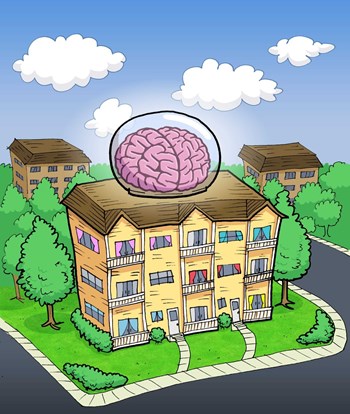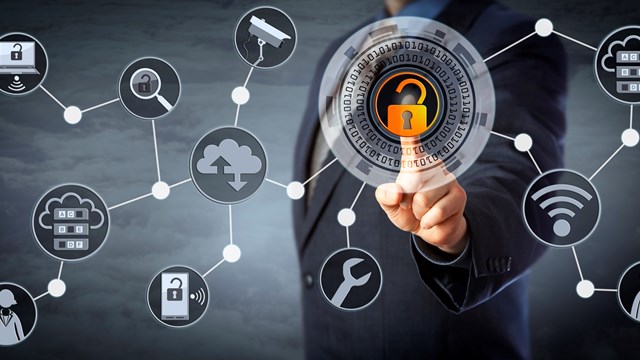
If phones can be “smart,” why not buildings? With the ever-expanding array of consumer technology available today, it should come as no surprise that residential buildings are able to incorporate more and more cutting-edge technology into their communications, security, and operations systems than ever before, and to unify building operating systems so they can be monitored and run from a central location by a building staff member, or by residents themselves with smartphones and iPads.
Many of these innovative systems are being installed from square one in new construction but also in the form of upgrades and retrofits in older buildings. Let’s take a look at the state of the industry.
When considering smart buildings, the key word is integration. But what does that mean exactly?
“Integration in general is a very broad term, which can be used to describe systems that are (a) just minimally aware of each other—and even systems that are aware of each other only as a result of manual effort,” says Jerry Kestenbaum, the president of BuildingLink, a Long Island City, N.Y.-based company that puts co-op and condo buildings online and gives residents access to all kinds of information, “or are (b) fully aware and communicating bi-directionally and in a way that enhances each system’s ability to behave better and smarter. In any building at all, system integration makes the mechanical, electrical and energy operations of a building flow more smoothly and efficiently.”
Behind the Curve
Generally speaking, commercial buildings are more likely to be state-of-the-art with respect to systems integration, while residential buildings tend to be behind the curve—in fact, “way behind,” says Allan Samuels, a principal at Energy Squared, LLC, an engineering consultant in North Brunswick. Multi-family buildings, co-ops and condos are “lagging behind terribly,” he says, although the technologies involved have the capacity to save money, save energy, and even avert maintenance headaches.
“We’ve seen buildings that use an excessive amount of energy due to lack of controls. For a relatively small capital outlay, they could be far more efficient,” he says. Commercial, office and retail buildings have been much faster to pick up on the value of integrated systems, he notes. But too often, developers of residential properties don’t feel there’s an incentive to include automated systems in buildings they’re constructing, and buyers don’t even think about the myriad mechanical systems that keep homes running.
Samuels is hopeful, though, that more leaders of residential communities will follow the lead of commercial properties and recognize the wisdom of investing in the new technology.
“The range of services [in the residential market] provided to its occupants tends to be broader, and its occupants make use of its services 24/7,” Kestenbaum notes. “Therefore, the more integrated a system is the better it will enable staff to accomplish its mission.”
One example of this, he says, is security. “The security needs of a residential building are much more diverse,” he explains, “in that they include key holding, security monitoring of common areas such as garage and laundry areas, access control monitoring of a range of different types of people with different access control needs even when apartments are unattended (babysitters, dog walkers, contractors doing renovations, food delivery, family members) as well as areas with special access control rules”—for example, no minors in the fitness room.
Of particular interest to residential buildings, with their multiple entries (front door, laundry, common rooms, roof, etc), is what Kestenbaum calls “key security—meeting the challenge of keeping emergency copies of owners’ apartment keys in a totally secure environment (so as to prevent employee theft or other unauthorized access) while at the same time providing quick emergency access 24/7.” This is a relatively new option, he explains. “Twenty years ago, there was no system at all for this, and now there are two: Keytrack, and KeyLink. These are highly sophisticated lockbox biometrically-operated systems, uniquely used by residential high-rise buildings, auto-dealerships, and the U.S. military in Iraq.”
Despite the obvious benefits of these key systems, they have not taken the world by storm. “Maybe 20 percent of buildings with 100 or more units have one or another of these high-tech key security systems,” Kestenbaum says. “The other 80 percent either have keys locked up someplace in a super’s office, or sitting in a jumble of boxes and marked envelopes at the front desk.”
A Range of “Smart” Systems
For all the benefits in the area of security, it is in conserving energy that intelligent buildings really derive value from their intelligence. Fact: commercial and residential buildings consume about one-third of the world's energy.
“Intelligent buildings typically tie together multiple, disparate systems,” adds Rawlson King, communications director of the Continental Automated Buildings Association, a 20-year-old international industry association, composed of about 350 corporate members. CABA is dedicated to the advancement of intelligent home and intelligent building technologies. “In fact, it can be argued that intelligent buildings transcend integration to achieve interaction so that previously independent systems work collectively to optimize building performance, including monitoring comfort levels, security systems, energy systems and operations.”
Integration and interaction are what drive intelligent buildings. But what does that mean, and how does it work?
Managing Building Operations
“Building automation systems and building energy management systems”—BAS and BEMS, respectively—“are designed to provide centralized oversight and remote control over heating, ventilation and air conditioning (HVAC) systems, lighting and other building systems,” King explains. “In simple terms, a BAS is a programmed, computerized network of electronic devices that are employed for control and monitoring of systems. It primarily aims at optimizing the performance, start-up and maintenance of systems and greatly reduces the interaction of mechanical subsystems in a building. BEMS basically performs the same functions as a BAS but varies more in capability and functionality.”
These systems carry out a host of functions, King says, including optimization of stop-and-start systems, maintenance scheduling, alarm generation, and constant monitoring of the whole integrated system.
Most existing residential buildings, Samuels explains, lack the ability to monitor what’s happening on an ongoing basis. Over time, controls are adjusted and re-adjusted, or mechanical systems begin to fail, but no one notices until there’s a problem. “You might reach the point where utility bills are so high that management decides to look into it. By that time, you’ve wasted a lot of money,” he says. A smart building will know when a motor on its way to failure begins to draw too much current, for example, and management can call for maintenance immediately, potentially avoiding a weekend emergency call.
Smart buildings, he says, can also monitor fresh air intake and adjust it to match actual need and seasonal activity, saving energy; monitor the air flow in ductwork, catching problems with clogged filters; use “daylight harvesting” systems to adjust lighting efficiently as the sun moves around the building; and monitor water usage, potentially catching leakage. “This makes management’s job a lot easier,” Samuels says. “Managers can get notifications (of problems) on their iPhone or Blackberry … knowledge is very powerful.”
Best of all, making a building “smart” doesn’t have to be outrageously expensive, he notes. “Obviously, a large building that’s spending a million dollars for utilities will see more benefit than one using $30,000, but there’s a value for the smaller building as well.”
For a minimal expense, a company called Vivint, (www.vivint.com) based in Provo, Utah and with offices nationwide, offers home automation systems for a few hundred dollars that homeowners can install. Homeowners can receive alerts on their BlackBerry or iPhones, for example, if their garage door was left open or their thermostat was too high when they were on vacation or away for the day. For a $200 activation fee and a service fee of approximately $70 a month, remotely from an iPad or smartphone device, a homeowner can lock their doors, turn off lights, control heating or cooling or connect to a dozen or more technologies powering their home. Energy management modules cost $200 for installation and $57.99 a month, and basic home security modules run around $200 for installation and $49.99 a month, according to Staley White, a public relations spokesperson for Vivint. The company can also create a customized package for homeowners allowing them to remotely control appliances like coffee pots and lamps and monitor security such as door locks and key fobs. A motion detector can also be installed to alert the homeowner when unexpected activity occurs.
Getting on Board
Of course, just because something is possible doesn’t mean everyone is doing it. “Some buildings have adopted only the barest of minimums of technology innovation, often when older systems have failed and have been replaced with new equipment, like current smarter boiler controls, elevator controls, or to meet bare-bones security needs—like having one or more video cameras displaying or recording a service alleyway or a laundry room area,” Kestenbaum says.
But owners, boards of trustees and managers who have an eye on the bottom line—and environmental issues—are looking at making their buildings smarter.
“If current trends continue, by 2025, buildings worldwide will be the largest consumers of global energy, using as much power as the transportation and industrial sectors combined,” says King. “Recent studies have found that improving energy efficiency in buildings is the least costly way to reduce a large quantity of carbon emissions. By changing energy management practices and instituting technologies that enhance energy efficiency, building owners and managers can reduce energy consumption by up to 35 percent.
“In an era of volatile energy prices and increasing concern over climate change, the need for the innovative application of technology has become highly acute,” says King. “Buildings with integrated intelligent building technologies can save thousands and even millions of dollars in energy by delivering heating, cooling and lighting more efficiency. Intelligent buildings are increasingly using solar walls to capture energy from the sun, ventilation systems to recapture and reuse heat, insulation strategies that enable better climate control, high-efficiency lighting systems that enhance illumination with less electricity and automatic systems that control building services based on activity.”
Kestenbaum agrees. “The LEED pioneers indicate that it definitely does save money, and depending on the areas targeted, the payoff can be longer or sooner. As costs come down, the payback period will become shorter and a greater number of types of ‘smart’ integration undertakings will make sense.”
Greg Olear is a freelance writer and a frequent contributor to The New Jersey Cooperator. Associate Editor Pat Gale contributed to this article.









Leave a Comment